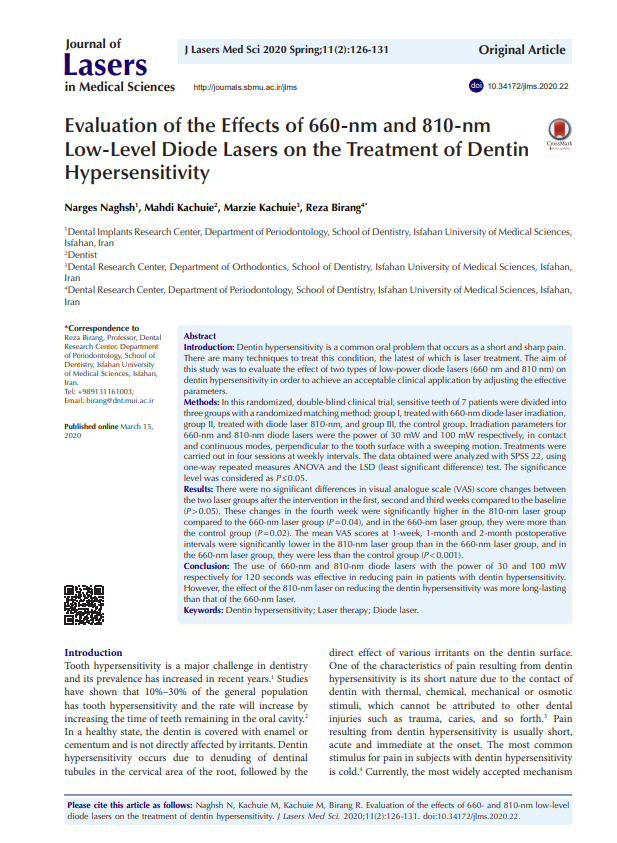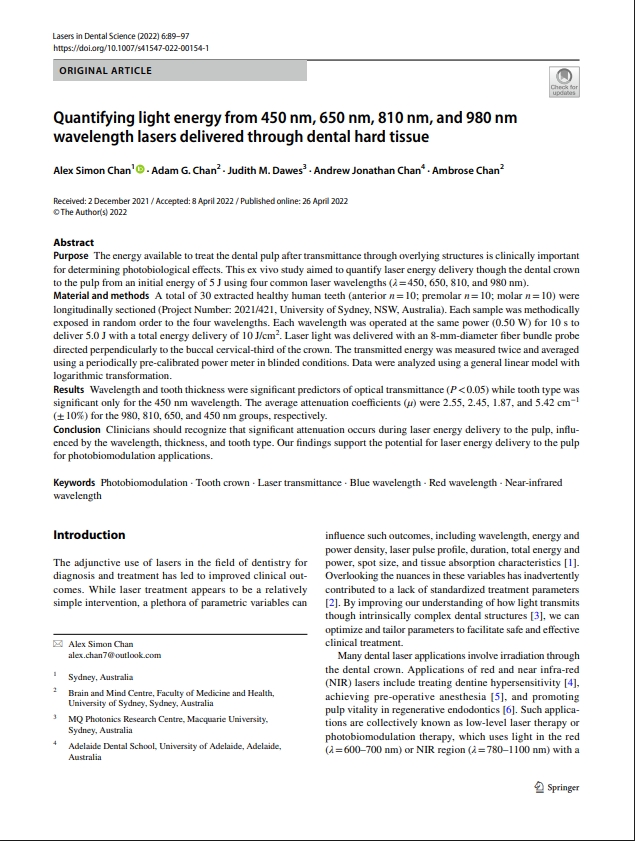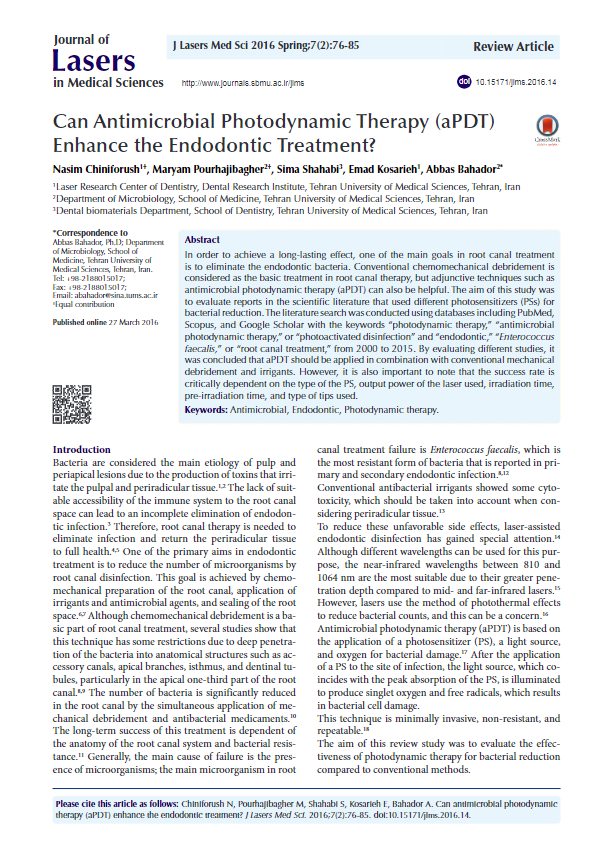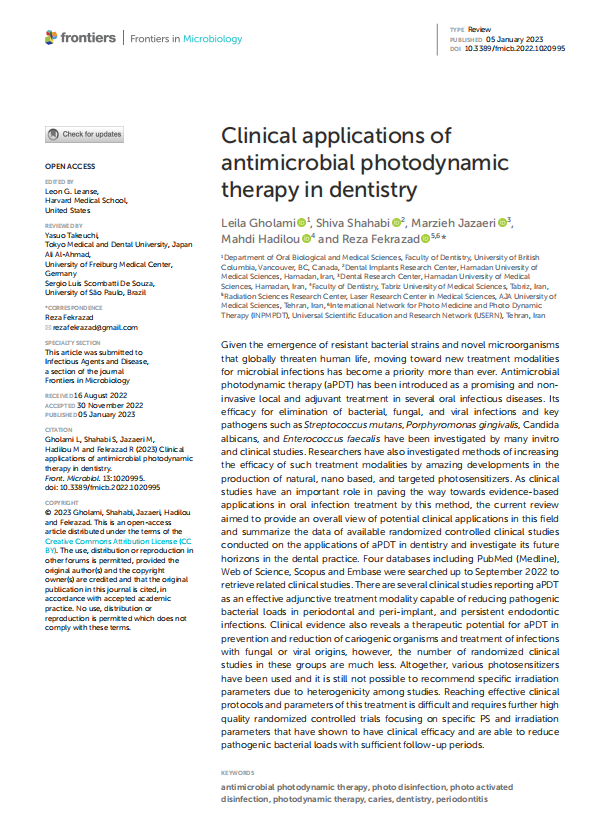Effective Relief for Tooth Sensitivity with Dual-Wavelength Laser Therapy (660 nm & 810 nm)
This study investigated the effects of 660 nm and 810 nm low-level diode lasers on patients suffering from dentin hypersensitivity. Participants received laser treatment without any surface anesthesia. Pain levels were evaluated before, immediately after, and one week post-treatment. Both wavelengths resulted in a significant reduction in sensitivity, with the 810 nm laser showing slightly better results in pain relief and longer-lasting effects. The findings suggest that low-level laser therapy is a reliable, safe, and efficient option for managing dentin hypersensitivity, improving patient comfort and satisfaction.




